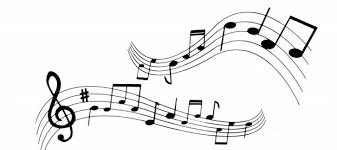The UAE’s music scene is thriving like never before as global and regional sounds unite in a powerful sonic tapestry. From Khaleeji rhythms to electronic beats, regional hip-hop to Egyptian mahraganat, listeners across the Emirates are embracing a rich palette of musical genres that reflect both heritage and contemporary flair.
Khaleeji: The Gulf’s Heartbeat
At the core of Emirati identity lies Khaleeji music, a century‑old genre rooted in Bedouin poetry and rich in string and percussion instruments such as the oud, rebab, mirwas, tabl, and duff ([en.wikipedia.org][1]). Modern Khaleeji pop continues to resonate across the Gulf today, with artists from Kuwait, Bahrain, Saudi Arabia, and the UAE blending traditional elements with pop sensibilities .
Arabic Pop Surge
According to a survey by Sony Music, Arabic pop ranks among the top‑streamed genres in the UAE, alongside dance, hip-hop, and Bollywood ([gulfnews.com][2]). Stars like Nancy Ajram and Elissa remain household names. Meanwhile, rising artists such as Elyanna, who fuses Arabic vocals with R\&B and hip-hop, are gaining international acclaim .


Mahraganat & Sawt: Street Sounds to Global
*Egyptian mahraganat, a high-energy mix of folk, EDM, and hip-hop, continues to captivate Middle Eastern youth . Complementing this is *Sawt from Kuwait and Bahrain—a poetic, percussion‑driven genre that bridges urban sophistication and Gulf sensibility.
EDM & Hip-Hop: Global Beats in Local Clubs
The cosmopolitan fabric of Dubai and Abu Dhabi is reflected in the popularity of EDM and *electronic music—especially among women—as well as an emerging **Arab hip-hop scene. Notable local rappers bring personal narratives and identity to the forefront ([gulfnews.com][2]). Meanwhile, *Afrobeats, Bollywood beats, Latin rhythms, and K‑Pop can now be found pulsing through Dubai’s nightlife venues .


Heritage Genres: Tanbura & Ataaba
The UAE’s musical heritage remains alive through regional traditions such as *Fann at‑Tanbura, a spiritual trance‑linked genre native to Eastern Arabia ([en.wikipedia.org][6]), and *Ataaba, a poetic folk form performed a cappella using rhyming homonyms ([en.wikipedia.org][7])—beginning in Bedouin celebrations and still heard in weddings and festivals.
Why These Genres Matter
A digitally connected and multi-themed society is fueling a unique ecosystem where tradition and innovation converge. Traditional genres preserve Emirati and Gulf heritage, while newer styles—like mahraganat and Arabic pop—mirror urban youth expression and global integration.
“The fusion of East and West,” such as international DJs sampling Arabic vocals, reflects how tradition can evolve through exploration .

What’s Next
The UAE’s music landscape is at an exciting inflection point. Traditional forms like Khaleeji, Tanbura, and Sawt will stay rooted in national identity. Meanwhile, the explosive rise of Arabic pop and genre-mixing—such as pop-infused Khaleeji—promises fresh, identity-rich expression.
Youth-led hip-hop, EDM events, and Afro-pop nights speak to a generation eager to own its sound. As Arabic pop gains international momentum, the UAE is poised to become a regional hub of genre fusion, unity, and cultural storytelling through music.
Do follow UAE Stories on Instagram.
The History Behind the Majlis: UAE’s Traditional Gathering Space















